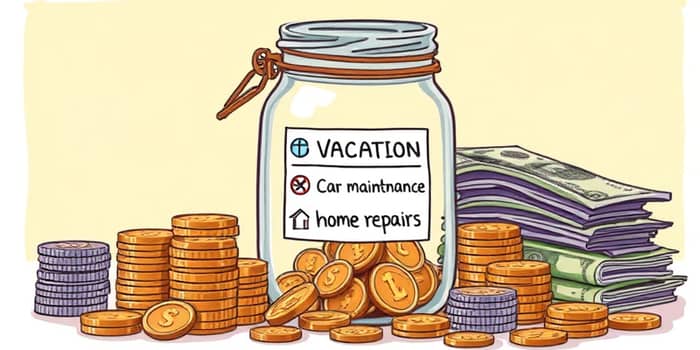Managing money effectively involves more than just tracking daily expenses—it requires foresight, discipline, and clear goals. A sinking fund offers a simple yet powerful way to prepare for planned expenses, avoid debt, and maintain financial health.
Understanding the Sinking Fund Concept
A sinking fund is a dedicated savings account set aside for a specific future expense or to repay debt. Unlike general savings, which serve as a catch-all for unexpected needs, a sinking fund is intentionally tied to a defined goal.
Individuals may use sinking funds for expenses such as annual insurance premiums, holiday gifts, or vacations. Businesses and governments establish sinking funds to repay bondholders or finance capital projects, signaling strong financial management to investors.
How a Sinking Fund Works in Practice
To create a sinking fund, start by identifying your target expense and the date by which you’ll need the money. Once the goal is clear, calculate how much you must contribute at regular intervals to reach the total.
For example, if you plan a $1,200 vacation in a year, you would set aside $100 each month. Automating these transfers ensures consistency and prevents temptation to dip into the fund for other purposes. By doing so, you avoid last-minute borrowing and keep your broader budget intact.
Sinking Funds in Context: Comparing Fund Types
Not all savings accounts serve the same purpose. Understanding how a sinking fund differs from other reserves can help you allocate funds more effectively.
By isolating a sinking fund from your emergency savings, you preserve your cushion for genuine crises and use targeted reserves for anticipated costs.
Key Benefits of a Sinking Fund
Implementing a sinking fund can transform your financial outlook and bring peace of mind well before expenses arrive.
- Spread out contributions over time, avoiding large lump-sum payments.
- Eliminate high-interest debt by relying on savings rather than credit cards.
- Maintain a balanced budget without sudden cash outflows.
- Clear goal and timeline keep you motivated and disciplined.
- Peace of mind when expenses arrive—the money is already there.
Setting Up Your Own Sinking Fund
Establishing a sinking fund is straightforward. By following these steps, you’ll build a reliable system to cover planned costs.
- Determine the purpose: Define the exact expense you’re saving for.
- Set a target amount: Calculate the total required by your deadline.
- Choose a timeframe: Decide when you’ll need the funds.
- Calculate contributions: Divide the total by the number of periods.
- Open a dedicated account: Keep it separate from other savings.
- Automate transfers: Schedule regular deposits and track progress.
Real-World Examples of Sinking Funds
People and organizations of all sizes use sinking funds to meet diverse goals without stress.
- Short-term goals: Car repairs, annual insurance, holiday shopping.
- Medium-term plans: Family vacation, home appliance replacement.
- Long-term objectives: Down payment on a house, college tuition.
Corporations often allocate quarterly profits to a sinking fund to retire bonds at maturity, which boosts stakeholder confidence and reduces the risk of default. Governments may reserve funds for infrastructure projects, demonstrating responsible fiscal planning to taxpayers.
Practical Tips for Success
Track your progress regularly and adjust contributions if your timeline or cost estimates change. Many budgeting apps support multiple sinking funds, making it easy to visualize and manage simultaneous goals.
Remember to review interest-earning options for your sinking fund account. Even modest returns can accelerate your progress without adding risk.
Conclusion: Empower Your Financial Future
By setting up a sinking fund, you embrace a proactive approach to money management. You replace last-minute scrambling with deliberate and stress-free planning, ensuring every planned expense is met with confidence.
Whether you’re saving for a once-in-a-lifetime trip, preparing for routine maintenance, or managing corporate debt, a sinking fund is a versatile tool that fosters discipline, clarity, and peace of mind. Start today and watch your financial goals become inevitable accomplishments.
References
- https://en.wikipedia.org/wiki/Sinking_fund
- https://corporatefinanceinstitute.com/resources/fixed-income/sinking-fund/
- https://www.jeniusbank.com/blog/articles/what-is-a-sinking-fund
- https://www.youtube.com/watch?v=AYVdIEQ2WPA
- https://www.sofi.com/learn/content/what-is-a-sinking-fund/
- https://www.icicibank.com/blogs/mutual-fund/what-is-a-sinking-fund
- https://www.centralbank.net/learning-center/why-you-need-a-sinking-fund/
- https://www.townofwellington.com/FAQ.aspx?QID=130










